Welcome to the first edition of LaLD school’s DieCast 101! I’ve had this series in mind for awhile, but BJ’s post where he snagged a Stockar Regular Treasure Hunt and the questions surrounding it finally inspired me to start writing.
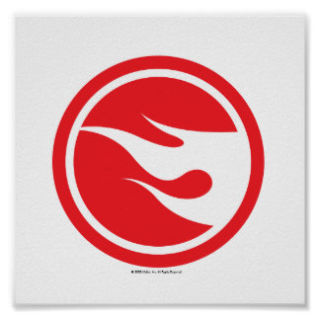
Back when I first got into collecting Hot Wheels I was flipping through the pegs at the local Target one day, when a mother pushing a child in her cart slowed to a stop in front of the Hot Wheels section. The child, who was probably still in diapers, voiced his displeasure with this decision. The mother replied with, ‘Just a second, mommy needs to check if there are any treasure hunts.’
“Treasure Hunts?” I thought. How could this very not stereo-typical collector know more about Hot Wheels than me?
Upon arriving home I combed through the various Hot Wheel collector sites for information on Treasure Hunts. It seems in recent years there has been some confusion over what has been released as official THs. This is partly due to the fact that symbols used to designate these models has been used before and, frankly, because Mattel wants to make it harder for the average collector (or non-collector) to find.
How Hot Wheels Are Sold From The Factory to the Store
Hot Wheels, like say, Baseball cards arrive with a random (well, semi-random) selection of cars in each case. Briefly, each case contains 72 cars. There are currently 15 releases a year and each release is designated by a new case letter (i.e. A, B, etc.) For more about case numbers and codes you can check this article out. Beginning in 1995, Hot Wheels began adding limited edition cars to some cases.
1995-2006
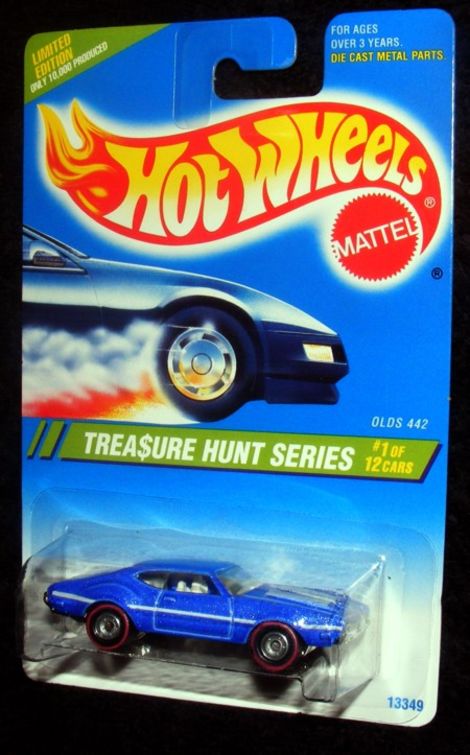
This is the first Treasure Hunt, an Olds 442 released in ‘95. (As an aside, I’d like to point out that this casting was originally produced in 1993 as a promo for the movie “Demolition Man”.) Note that it is quite obviously labelled, even using the dollar sign for the “S” in Treasure. Mattel was certainly not going for subtlety here.
Not surprisingly, putting a big dollar sign right in the middle of the card along with the words “Limited Edition” were like catnip to crack addicts and collectors were all over it. The next year Treasure Hunt production was bumped up from “Only 10,000 Produced” to 25,000. As of 1997, Mattel no longer discloses how many copies of each Treasure Hunt they produce but it seems clear that number has continued to rise. Treasure Hunts were a huge hit.
Despite their popularity among collectors, however, the actual models released as “Treasure Hunts” were not terribly impressive, or even distinctive, when compared to the mainline cars they were “hidden” amongst. The ‘95 and ‘96 T-Hunts used Metal Flake paint and rubber tires, but in ‘97 they were fitted with mainline plastic wheels instead of the rubber tires. Rarely did a TH model stand out for much more than that Green bar on the card and the Dollar Symbol in place of an “S” in “Trea$ure Hunt”.
An exception to this rule appeared in 2005 when a “Bonus” 13th Treasure Hunt was released. The bonus vehicle was the extremely popular Customized VW Drag Bus. Designed by Phil Riehlman, this special release commemorated its 10 year Anniversary.
2007-2010
In 2007, Mattel dramatically reshaped the series by breaking it into two tiers: Regular Treasure Hunts and Super Treasure Hunts. These new “Super” versions finally were worthy of being labelled “Treasure Hunts” by featuring premium Spectraflame paint along with Real Riders (rubber) tires.
For a great article on Spectraflame check out our own ENGINERRRRRR’s post here.
Under this new tiered system one cast was released in both regular “T-Hunt” and in “Super T-Hunt” versions.
For example:
Studebaker Avanti - Regular and Super Treasure Hunts (Fun Fact: Hot Wheels has actually never released the Avanti as a mainline)
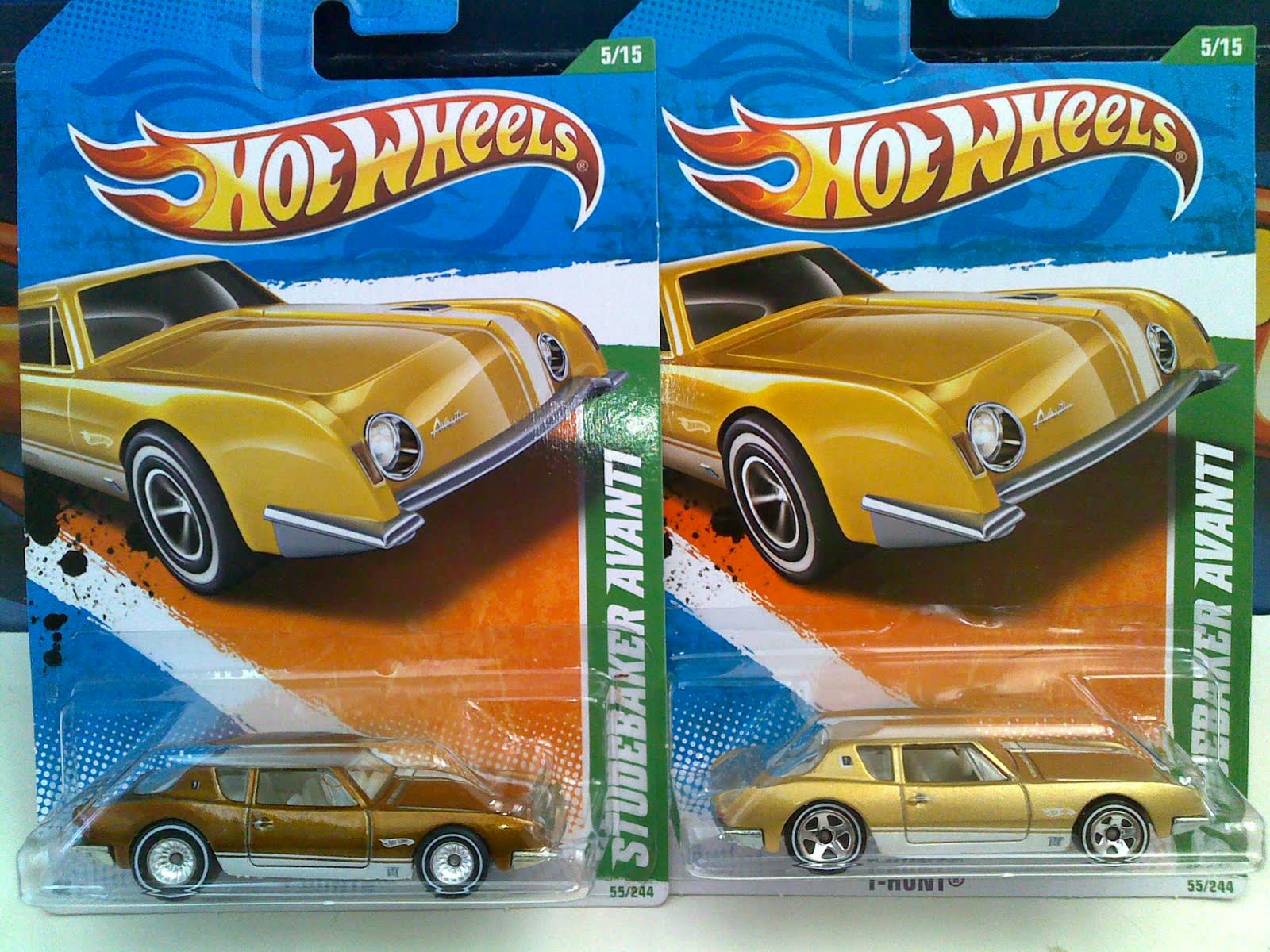
Note the green bar remains and it is quite clearly labelled, making them fairly easy to locate among the non-Treasure Hunts.
2011
The lineup of Regular and Super THs expanded to 15 a year. Since there are 15 case releases each year, this meant that a new Super and regular TH would be launched with each new case. Of course you are not guaranteed a Treasure Hunt in any case, but at least now you knew what to look for!
2012
Another major shift occurred in 2012, when Mattel repackaged Supers, dropping the green bar and any labeling that that would tip off those not looking for them. In the words of the marketing department Supers became know as “Super Secret Treasure Hunts.”
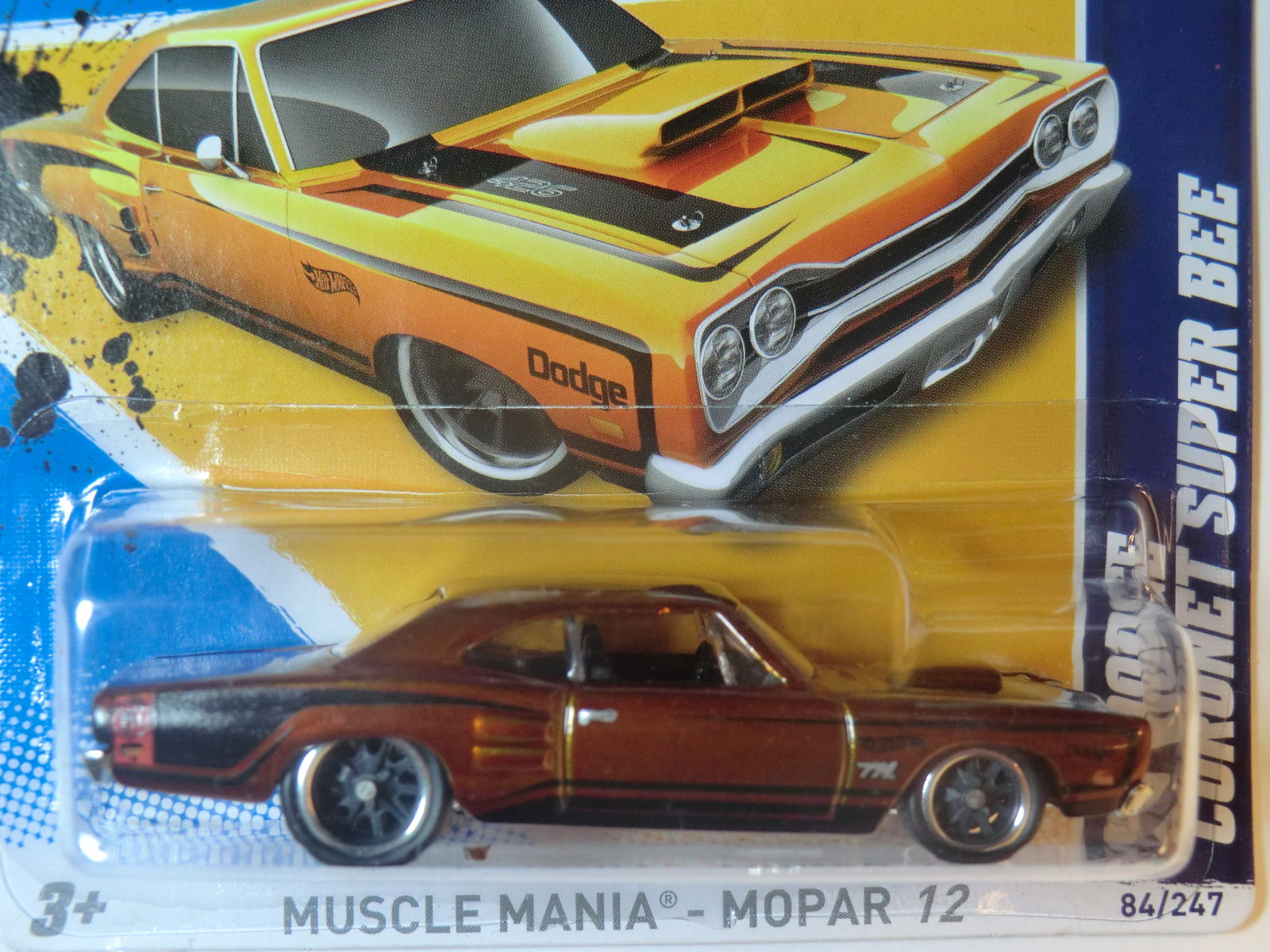
The first issue of a “Super Secret Treasure Hunt” a 69 Dodge Coronet Super Bee.
Without the green bar and/or the label people started getting really confused. Even now, years later, you will find FB/IG/Twitter posts made by people who hope they are posting pics of a model and asking ‘Is this a Super?!?’ (No, no it’s not).
In order for it to be an official “Super Secret Treasure Hunt” both of these must be present:
Spectraflame paint
Real Riders tires
One final change Hot Wheels made was to differentiate the Supers even further from the Regulars. Prior to 2012 every Treasure Hunt was released as BOTH a Regular and a Super:
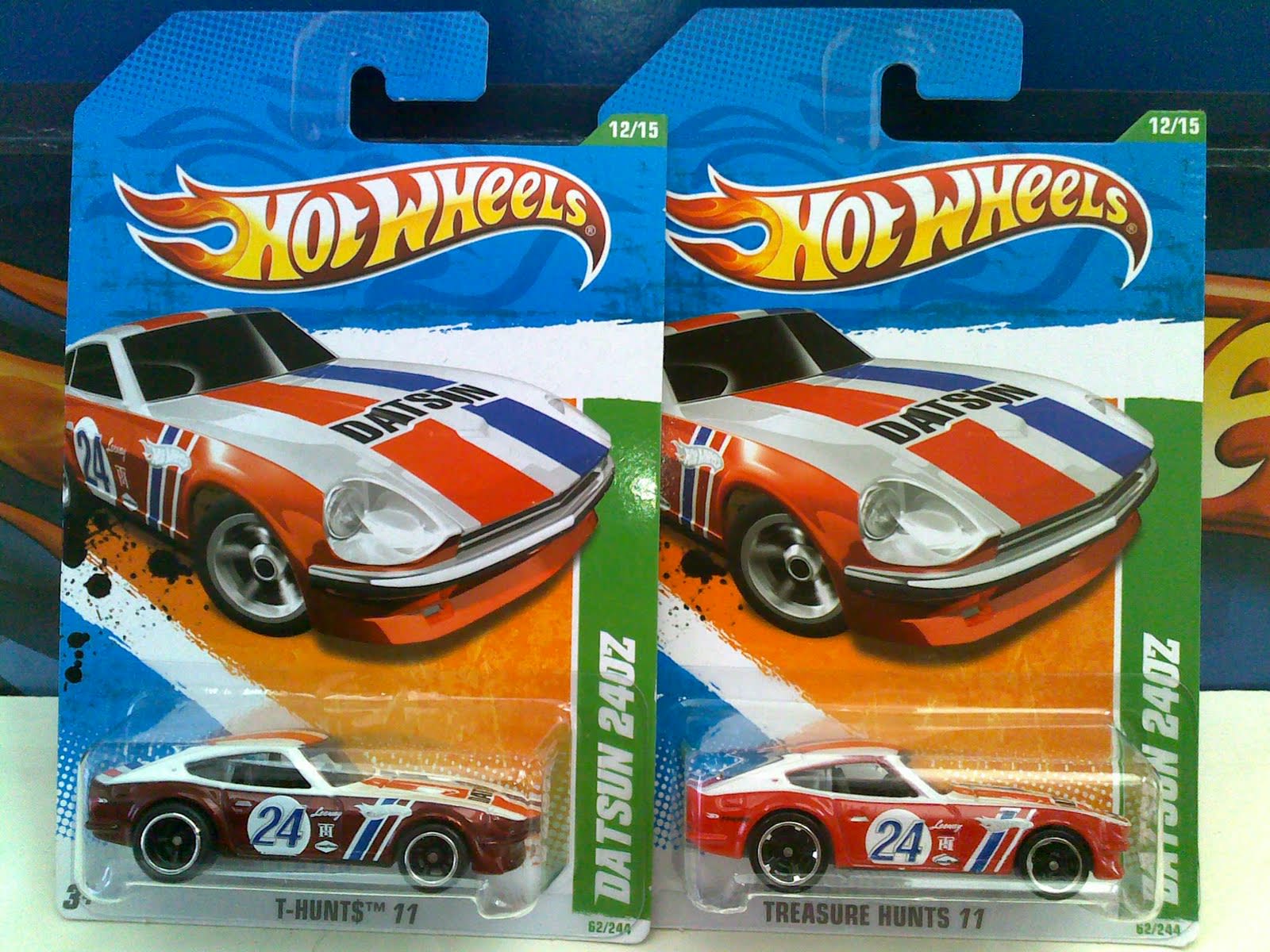
Now that Supers were deemed “Secret” no Regular TH version of the Super was issued. Instead, the Super TH case would include a mainline that was very similar appearance to the Super. The Spectraflame paint used on Super THs is always a similar hue to the mainline model and have made them easy to overlook.
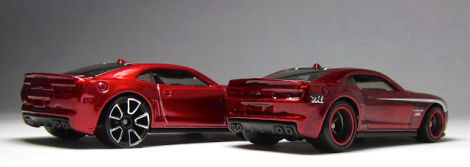
Picture from the Lamley Group. The super is on the right. Note the difference in wheels and slightly darker paint.
Under this system, fantasy castings are more likely to get the Regular TH treatment, while popular licensed castings are more likely to be Super T-Hunts.
2013
Sensing the opportunity to make things even more complicated and confusing, Mattel removed the green bar and T-Hunt label from the cards of Regular Treasure Hunts and they, too, became harder to identify. The 2012 “TH” logo now became exclusive to Supers, while Regular Treasure Hunts were marked with “The Symbol of the Flame” logo (pictured up top).
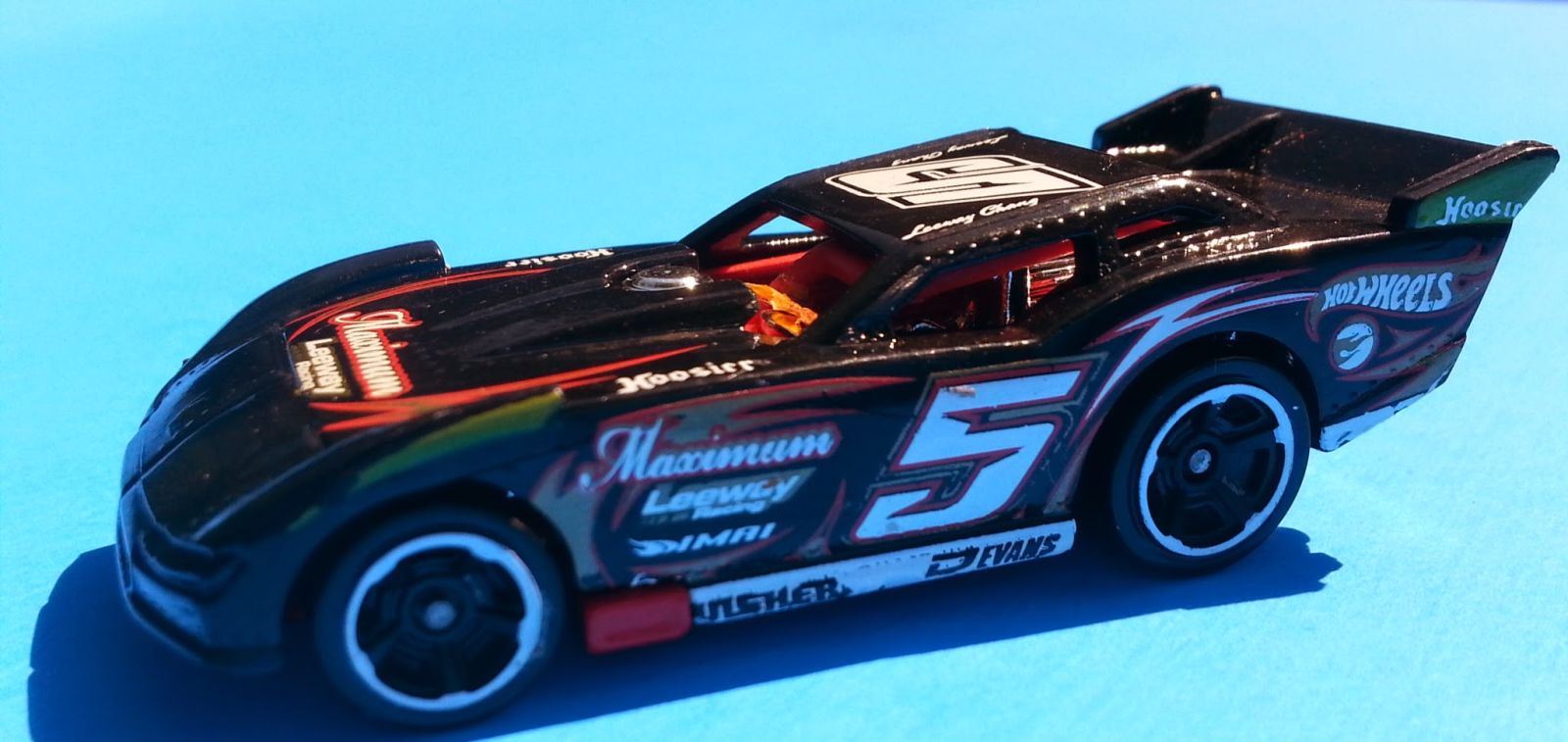
Maximum Leeway Regular Treasure Hunt (photo by me). Can you find the logo?
This explanation is found behind the models of Regular Treasure Hunts:

Image via DIECAST PHOTOGRAPHY
This is the 2014 Q Case:
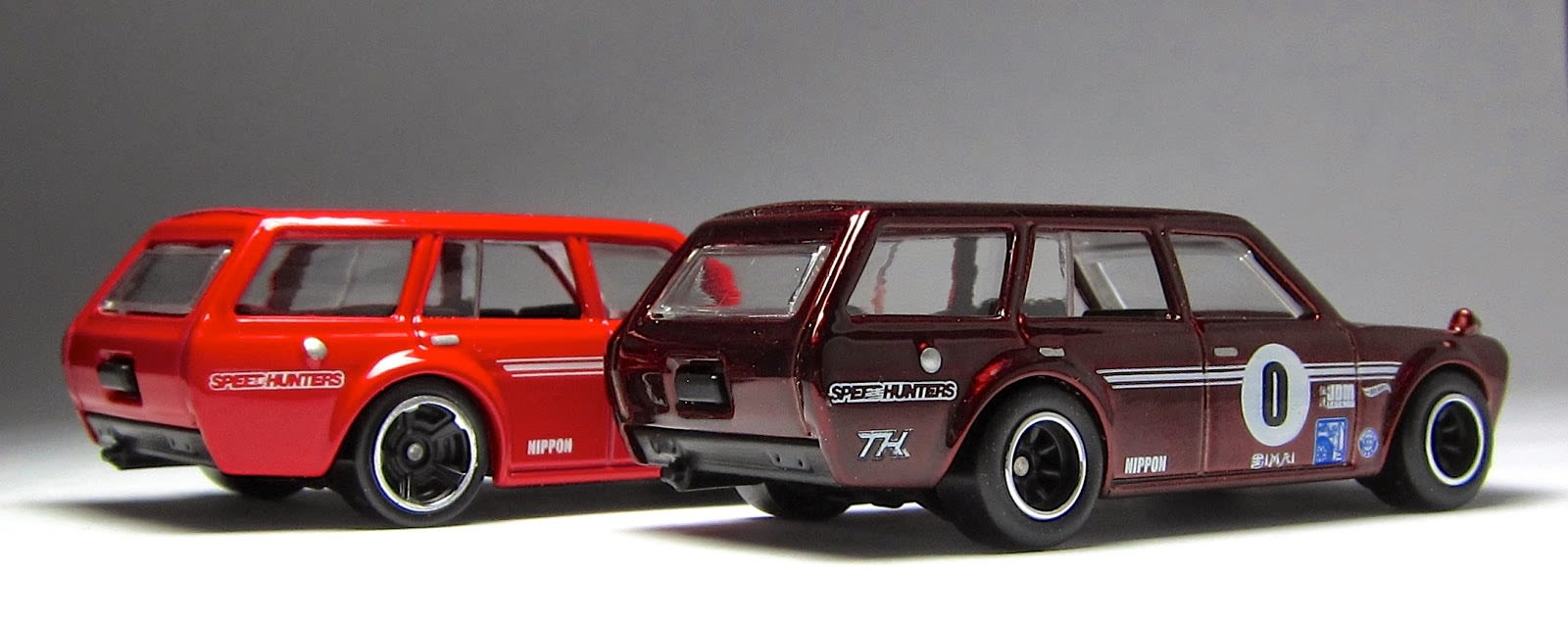
Photo by the Lamley Group. Super is on the right.
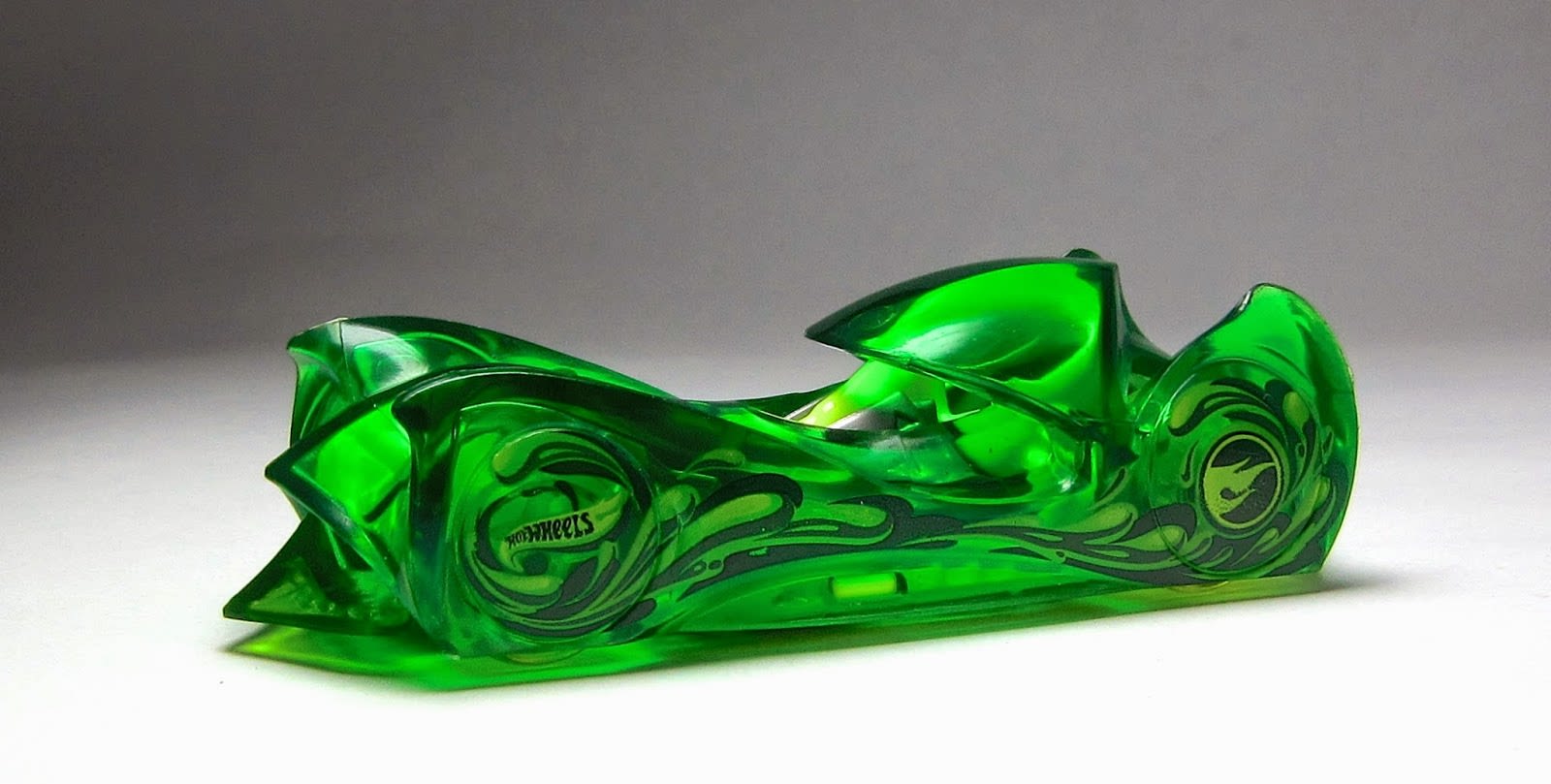
Also debuting in the Q Case was the Cloak & Dagger Regular Treasure Hunt. Note: Symbol of the Flame
2014
No significant changes
2015
For reasons not entirely clear, this graphic appears on the card behind Supers as well as Regulars:

I mention that it is not clear because the Symbol of the Flame doesn’t (and to my knowledge, has never) appeared on Super Treasure Hunts.
Super Treasure Hunts have remained extremely popular with collectors. They are likely the most sought after of modern Hot Wheels. Treasure Hunts (and the aftermarket for them) has divided the collecting community and caused some very ugly behavior by a few. I’ve heard numbers ranging from 1 in 4 cases to 1 in 60(!) cases containing a Super. There are also rampant rumors of Mattel employees smuggling them out of the factories in Asia, as well as retail employees at, say, your local Wal-Mart getting to them before they ever hit the pegs. Certainly they inspired our early slogan of “Down with Scalpers!” Regulars are less popular and are occasionally left behind by veteran collectors, as their value is negligible.
Hunting for Supers, however, is something we all should do. Spotting a Super requires a keen eye or at least some forehand knowledge. I remember exactly where I was and how I found every Super Treasure Hunt in my collection. They are produced by Mattel specifically for collectors to find, and when you do come across a Super, you have likely been very fortunate.
Good Luck & Happy Hunting!
(Sources: http://hotwheels.wikia.com/; http://www.hwtreasure.com/; http://lamleydlm.blogspot.com/)
Other Diecast 101:
What is a Case Letter and What Does It Mean?
Are there any topics you’d like to see covered in future editions of Diecast 101? Please let me know in the comments or via Jeff [at] liveandletdiecast.com!